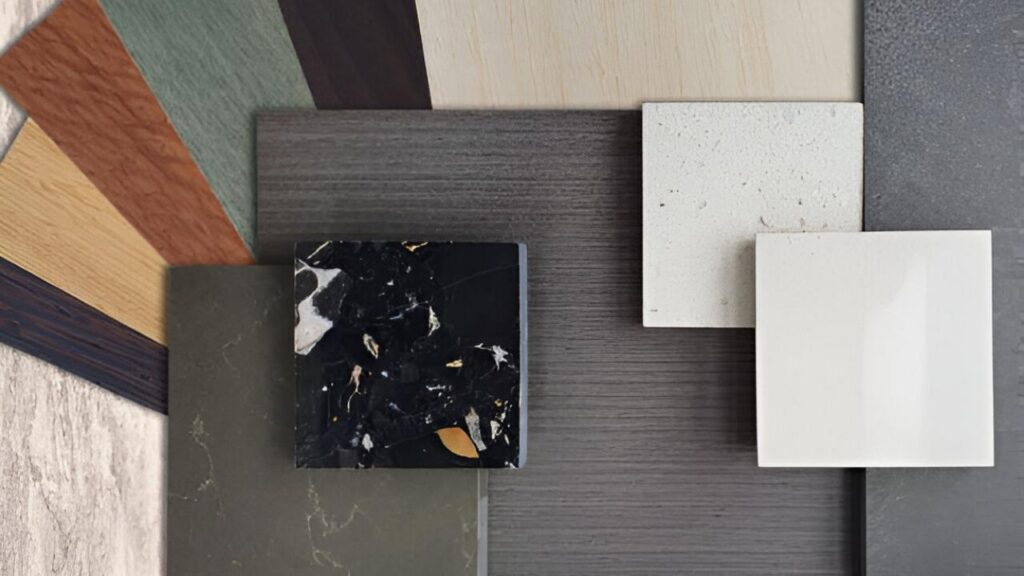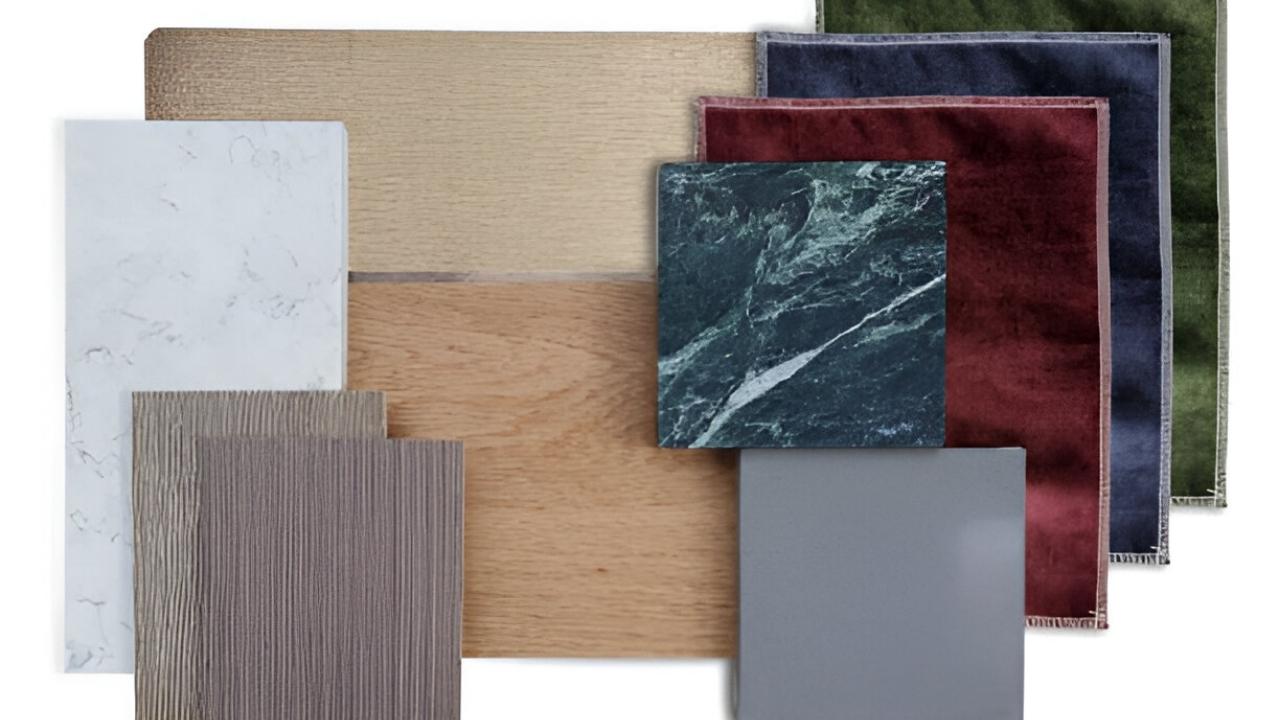Marble has long been synonymous with luxury, elegance and timeless beauty, thanks to its rich historical legacy. However, natural marble comes with significant costs – both in initial investment and demanding maintenance requirements. Today, a revolutionary alternative offers the perfect solution: faux marble delivers stunning visual authenticity with enhanced durability and effortless upkeep.
The complete guide introduces all important faux marble information that includes its main categories combined with its advantages and technical applications in addition to installation details and maintenance advice.
What is Faux Marble?
The manufacture of faux marble involves synthetic materials to create imitation marble patterns that use affordable substitutes instead of natural marble substances. Engineered stone and laminate materials and hand-applied painted designs along with ceramic products constitute marble imitation products that duplicate natural marble appearance.
How Faux Marble is Made
The manufacturing steps for faux marble differ between the various types available on the market.
- Engineered Stone — Engineered Stone Faux Marble refers to material made by reprocessing quartz and resin with pigments into a substance that resembles marble.
- Laminate — The production of laminate faux marble involves decorating composite materials with printed marble designs which receive protective treatment.
- Painted — Artists combine paint products with glaze solutions by hand to create genuine-looking marble finishes through painted achievements.
Types of Faux Marble
Multiple versions of faux marble products are available for commercial acquisition. Each marble imitation type possesses particular advantages that best suit particular application needs.
1 Engineered Quartz Marble
- The fabrication process of this material includes a mixture of 90-95% quartz alongside resins.
- Highly durable, non-porous, and scratch-resistant.
- Available in a wide range of marble-like patterns.
- This material serves well for countertop surfaces as well as flooring installations and applications in wall cladding.
2 Laminate Marble Alternative
- Features a printed marble design over high-density fiberboard (HDF).
- Budget-friendly and easy to install.
- Works best for kitchen surfaces, tabletops, and decorative installations.
3 Porcelain and Ceramic Marble Tiles
- Manufactured from minerals and clay materials which receive surface glazing for the marble effect.
- Resistant to moisture and staining.
- Laminate marble alternative serves well as flooring material while also working for walls and backsplashes.
4 Artificial Marble Paint Techniques
- The technique includes various paint colors and glaze to achieve this effect.
- Cost-effective DIY alternative for walls, furniture, and décor.
- Although it needs professional expertise it allows homeowners to tailor their marble appearance.

Benefits of Faux Marble
- The affordable price of man-made marble makes it a money-saving material that draws homeowners concerned about budgets.
- The marble replica shows denseness that makes it require minimal maintenance while staying durable for an extended period of time.
- Modern production techniques enable the creation of faux marble surfaces that have an authentic marble appearance.
- The use of recycled materials within engineered quartz products produces products that are environmentally friendly.
- Used in countertops, walls, floors, and furniture surfaces.
Applications of Faux Marble
Bathroom Surfaces
Bathroom Surfaces — Ideal for vanities, showers, and backsplashes due to moisture resistance.
Flooring
Ideal flooring materials include porcelain and ceramic tiles that resist wear and stay easy to maintain.
Furniture & Home Décor
You can enhance cabinets and these other wooden items by using decorative paint which gives them a marble appearance.
Installation Tips for Faux Marble
Choosing the Right Type
People who need decorative surfaces should choose their synthetic marble materials based on function (quartz for strength and porcelain tiles for wet spaces and laminate for budget needs).
Proper Surface Preparation
Start all installations on surfaces that remain free of moisture while being flat and smooth.
Using the Right Adhesives
The appropriate bonding adhesive from the manufacturer should be used for secure installation.
Sealing and Finishing
The majority of artificial marble materials do not require a sealant but painted finishes must receive a protective finish.
Hiring Professionals vs. DIY
- Professionals should handle the installation of quartz and porcelain materials because professionals have expertise in both material cutting and lightweight handling.
- A successful DIY installation is achievable on laminate surfaces and painted finishes only when equipped with right instructions.

Maintenance and Care
Cleaning Tips
- Rub surfaces using a solution of mild soap next to a soft cloth.
- Use only delicate cleaning materials that do not involve solidity or corrosive activity.
Preventing Scratches and Stains
- Set countertop protectors like coasters, trivets and cutting boards across surfaces for prevention of damage.
- Dirt particles cannot cause scratches when you regularly sweep and mop.
Long-Term Durability
- Applications of appropriate maintenance and cleaning techniques enable this marble substitute to survive for a span of twenty years.
- Laminate and painted surfaces admit touch-up solution repair for their minor damages.
Conclusion
The artificial marble material gives homeowners the combination of attractive appearance with affordable purchasing options and convenient caring requirements. Homemakers who select this material from different production types can acquire marble-like aesthetics while limiting their maintenance and financial responsibilities. When you select the appropriate faux marble type and implement proper care it will produce elegant and durable enhancements to any environment.
Comparison Table
| Feature | Faux Marble | Real Marble |
| Cost | Affordable | Expensive |
| Durability | Poor durability | Prone to scratches & stains |
| Maintenance | Low maintenance | Requires sealing & upkeep |
| Moisture Resistance | Non-Porous (except painted version) | Absorbs moisture |
| Appearance | Highly realistic | Natural, unique patterns |
FAQs
How to Choose the Best Faux Marble for Your Space?
Consider the following factors:
- Laminate functions as the least expensive solution but quartz delivers both high price and durable properties.
- The distribution of such materials should happen in heavily used spaces where porcelain and quartz will prove their durability.
- Your home design needs a design which matches its existing aesthetic character.
What is faux marble made of?
Artificial or engineered marble represents a man-made product which duplicates natural marble through mixes of marble dust with resins and pigments sometimes supported by calcium carbonate and additional components.
What are the disadvantages of faux marble?
Dispersions possess lower durability compared to original marble countertops. The material experiences both scratching and chipping while its surface gets dull as time passes.
Is faux marble any good?
You can benefit from faux marble since it provides affordability along with lightweight construction and low maintenance needs. The material does not require sealing as natural marble does because it resists both stains and scratches thus making it ideal for busy spaces.
Does faux marble last?
The concept appears to be an ideal solution. When looking for marble appearance at lower prices cultured marble provides the perfect solution. It is important to understand the constraints which come with using an imitation stone. Correct maintenance of cultured marble countertops allows them to survive for about 20 years.
